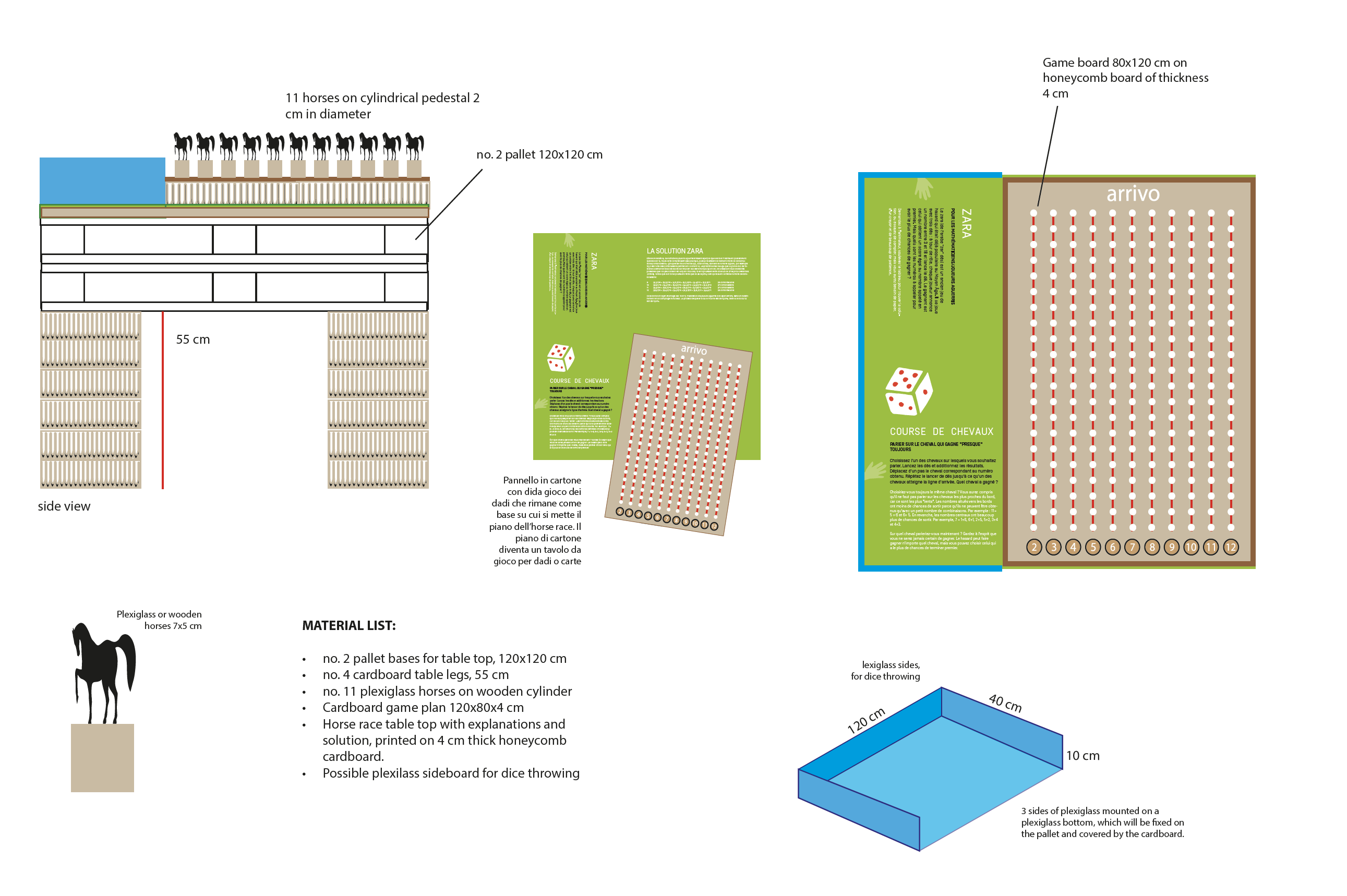Through the Zara game (the three dice game), and the problems it inflicted upon the most hardened players since Galileo Galilei’s time, the visitor is brought into the probability section. The importance of counting comes to light in this game. The numbers of the horsies correspond to the result of the sum of the roll of two dice (each with 6 faces and numbers 1 to 6). The horsies advance one step each time their number comes out as the sum of the two dice rolled, and the dice rolls are repeated until one of the horses reaches the finish line. Which horse is best to bet on? Which horse is most likely to win?
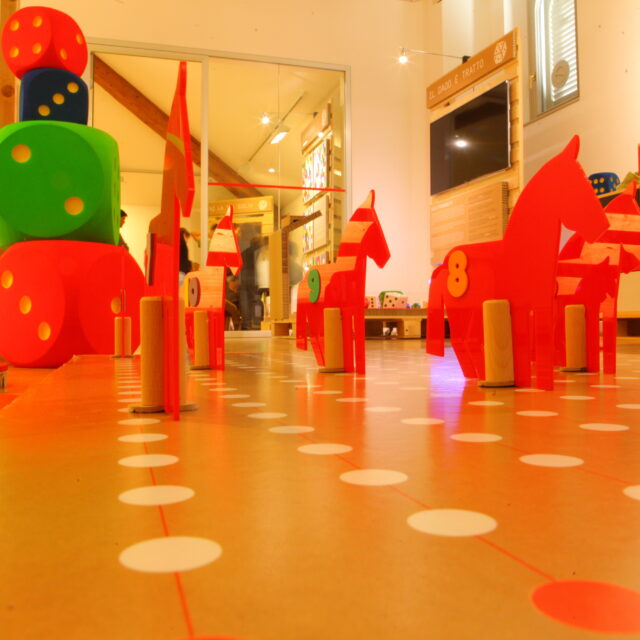
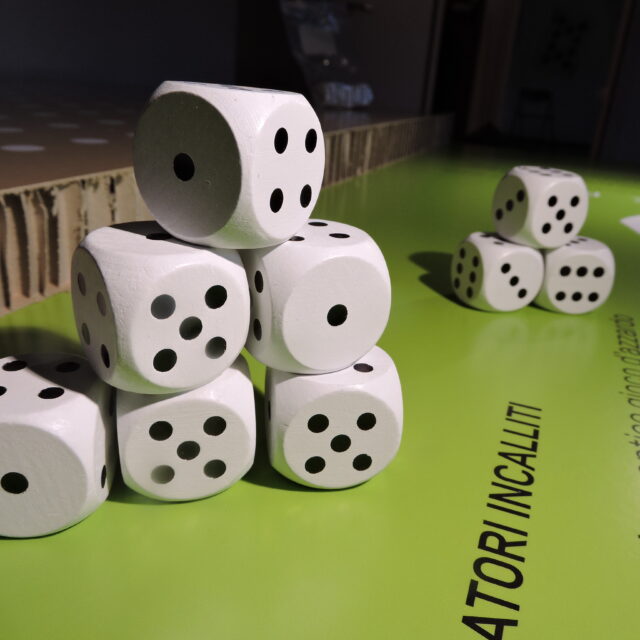
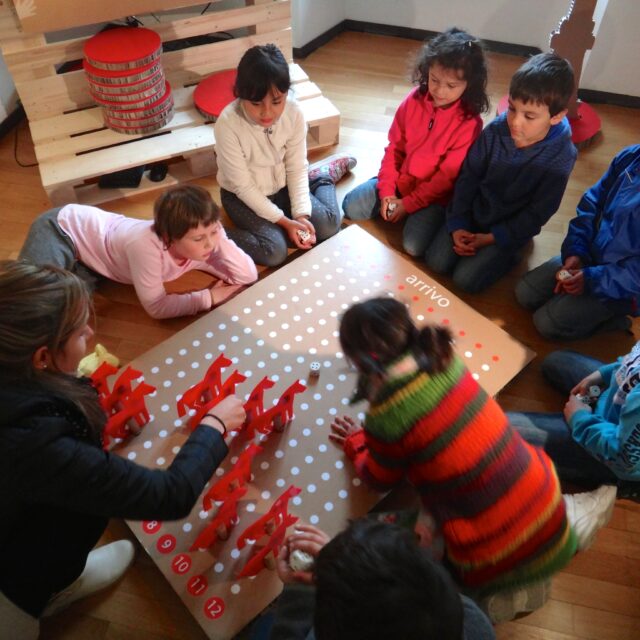
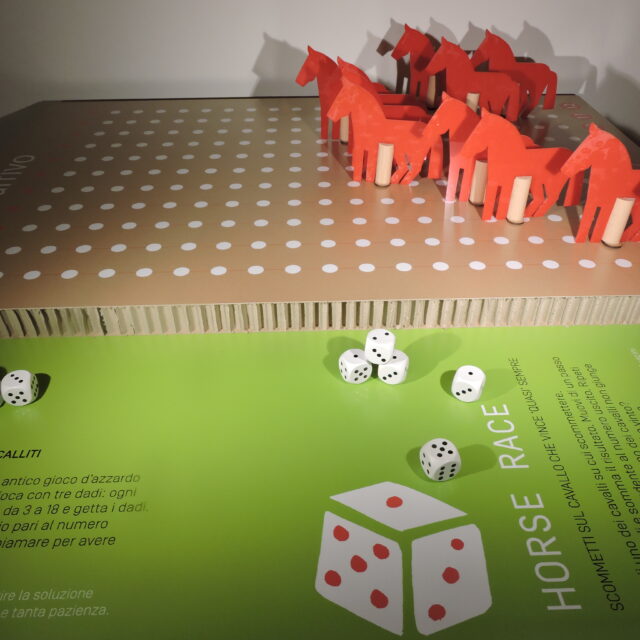
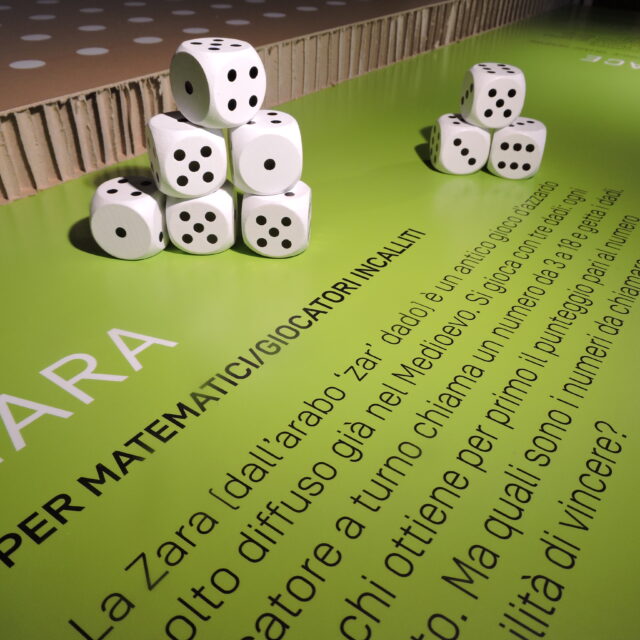
Quando si parte il giuoco della zara,
Colui che perde si riman dolente,
Repetendo le volte, e tristo impara;
Con l’altro se ne va tutta la gente;
Qual va dinnanzi, e qual di dietro il prende,
E qual da lato li si reca a mente.
Ei non s’arresta, e questo e quello intende;
A cui porge la man, più non fa pressa;
E così dalla calca si difende.
Tal era io in quella turba spessa,
Volgendo a loro, e qua e là, la faccia,
E promettendo mi sciogliea da essa.dante alighieri [Pur, VI, 1-12]
La teoria della probabilità non è in fondo che buon senso ridotto a calcolo; essa permette di valutare con esattezza ciò che le menti illuminate sentono per una specie di istinto senza rendersene conto… E’ notevole come tale scienza, che è cominciata con gli studi dei giochi d’azzardo, si sia elevata ai più importanti oggetti delle conoscenze umane.
(The theory of probability is at bottom nothing but common sense reduced to calculation; it makes it possible to evaluate exactly what enlightened minds feel by a kind of instinct without realizing it… It is remarkable how such science, which began with studies of games of chance, has risen to the most important objects of human knowledge).
Blaise pascal
How to play
In the game Horse race there are eleven little horses numbered from 2 to 12. The numbers of the little horses correspond to the resul t of the sum of the roll of two dice (each with 6 sides and numbers 1 to 6). The horsies advance one step each time their number comes out as the sum of the two dice rolled, and the dice rolls are repeate d until one of the horses reaches the finish line. Which horse is best to bet on? Which horse is most likely to win?
FOR TEACHER
FOR SCIENTIFIC EXPLAINER
INSIGHTS AND LINKS
ASSEMBLY SHEET
FOR TEACHER
The game highlights how it is not convenient to bet on the horses closest to the extremes i.e. with number 2 or 12 being the slowest ones. In fact, these numbers are less likely to come out since they can only be obtained with a few combinations. For example, horse 11 can only advance with two combinations = 5 + 6 and 6 + 5. Whereas the middle numbers are much more likely to come out. For example 7 = 1+6, 6+1, 2+5, 5+2, 3+4 and 4+3.
In total, if you roll two dice-with values from 1 to 6-you can get 6×6=36 results. The frequencies of the possible sums are as follows:
- Little horse 2: 1+1 = 1/36
- Little horse 3: 1+2, 2+1 = 2/36
- Little horse 4: 1+3, 3+1, 2+2 = 3/36
- Little horse 5: 1+4, 4+1, 3+2, 2+3 = 4/36
- Little horse 6: 1+5, 5+1, 4+2. 2+4, 3+3 = 5/36
- Little horse 7: 1+6, 6+1, 2+5, 5+2, 3+4, 4+3 = 6/36
- Little horse 8: 2+6, 6+2, 3+5, 5+3, 4+4 = 5/36
- Little horse 9: 3+6, 6+3, 4+5, 5+4 = 4/36
- Little horse 10: 4+6, 6+4, 5+5 = 3/36
- Little horse 11: 5+6, 6+5 = 2/36
- Little horse 12: 6+6 =1/36
7 is the most likely outcome. This means that it pays to bet on horse number 7; however, there is no certainty of winning. Chance can bring out any of 11 possible outcomes.
♣ Using this game as a starting point, one can reflect on the issue of betting on horses and hook into raising awareness about gambling (see page on roulette).
FOR SCIENTIFIC EXPLAINER
A simplified version of the game, especially for younger children, is as follows:
An even more intuitive explanation can be obtained by playing the same game with 3 little horses: one black, one gray, one white. To advance them you draw 2 balls from a bag. If we get 2 black balls the black horse advances, if we draw 2white balls the white horse advances, if we get one black and one white ball the gray horse advances. Possible results: 2 (colors) x 2 (balls drawn) are 4. Which horse is more likely to win?
- Black horse: black ball + black ball = 1/4
- White horse: white ball + white ball = 1/4
- Gray horse: white ball + black ball, black ball + white ball = 2/4 (50%)
The favored horse is the gray!
INSIGHTS AND LINKS
Zara, from the Arabic word zar, dice, is a gambling game that was widespread as early as the Middle Ages and consists of the rolling of three dice on which each player in turn bets the output of a number from 3 to 18 corresponding to the sum of the three numbers indicated by the dice. Whoever guesses first wins. As early as the 1600s, however, many hardened players noticed that 10 and 11 came up more frequently than 9 and 12, but they did not understand why since these could come up in the same number of combinations. The problem was so keenly felt that the Grand Duke of Tuscany asked Galileo Galilei to study it. Galilei writes:
…ancor che il 9 e ‘l 12 in altrettante maniere si componghino in quante il 10 e ‘l 11, per lo che di eguale uso devriano esser reputati, si vede non di meno che la lunga osservazione ha fatto da i giocatori stimarsi più vantaggiosi il 10 e l’11 che ‘l 9 e ‘l 12.
(Galileo Galilei, “Sopra le scoperte de i dadi”, probably written in the years between 1612 and 1623)
Galileo noted that both 10 and 11 “are obtained by the same number of triplicities” (the values visible on the three dice). These triplicities can be of three kinds: those that are made up of 3 equal numbers, which can be obtained in one way, those that arise from 2 equal numbers and the third different one that are produced in 3 ways (e.g., 1.1.2. : triplicity: 1.1.2 can also be obtained with: 1.2.1 and with 2.1.1) and those arising from 3 all different numbers that are formed in 6 manners (e.g.: 1.2.3; 1.3.2; 2.1.3; 2.3.1; 3.1.2; 3.2.1).
Thus, counting right, both 10 and 11 can be obtained in twenty-seven different ways (orderings), while 9 and 12 in only twenty-five ways despite having the same number of combinations, i.e., six:
- 9 [6,2,1]*6 + [5,3,1]*6 + [4,3,2]*6 + [5,2,2]*3 + [4,4,1]*3 + [3,3,3]*1 = 25 sorting
- 10 [6,3,1]*6 + [5,4,1]*6 + [5,3,2]*6 + [4,4,2]*3 + [4,3,3]*3 + [6,2,2]*3 = 27 sorting
- 11 [6,4,1]*6 + [6,3,2]*6 + [5,4,2]*6 + [5,5,1]*3 + [5,3,3]*3 + [4,4,3]*3 = 27 sorting
- 12 [6,5,1]*6 + [6,4,2]*6 + [5,4,3]*6 + [6,3,3]*3 + [5,5,2]*3 + [4,4,4]*1 = 25 sorting
What gives a slight advantage to 10 and 11. The probability of 10 or 11 coming out is 12.5 percent, of 9 or 12 coming out is 11.6 percent, a small but decisive difference in percentages. Finally, Galilei concludes his analysis by saying:
…da questa tavola potrà ogn’uno che intenda il gioco, andar puntualissima- mente compassando tutti i vantaggi, per minimi che sieno, delle zare, de gl’incontri e di qualunque altra particolar regola e termine che in esso giuoco si osserva, etc.
A table similar to the one created by Galileo can be found in the figure below:

ASSEMBLY SHEET
How to build
EXHIBIT MATERIAL:
- Gameboard 120×80 cm
- At least no. 2 regular dice
- no. 11 little horses of the same color
- no. 3 little horses, one white, one black and one gray
- no. 2 pallet 120x120x15 cm
- no. 4 honeycomb cardboard 160x80x5cm (to make 4 table legs, square base 40 cm by 40 cm high).
CLICK AND DOWNLOAD PRINT-READY .PDF FILES:
- GAMEBOARD HORSE RACE (ITA)
- GAMEBOARD HORSE RACE (DE) // dimensions: 120×80 cm // material: laminated honeycomb cardboard for digital printing, 5 cm high.
- PANEL EXHIBIT (DE)
- PANEL EXHIBIT (ITA) // dimension: 120×120 cm // material: laminated honeycomb for digital printing, 5 cm high
- LITTLE HORSE MODEL // for lasercut use.
“NUMBED BY NUMBERS” HORSE RACE Version
The game base is a table built with no. 2 pallets stacked on top of each other and no. 4 honeycomb cardboard legs of 40×40 cm base, 40 cm high. The measurements of the pallet and honeycomb cardboard are shown on the side. The game board is movable, so that it can be moved, even on the floor, to allow even a group of children to play together. The leapfrogs (little horses) can be made of plexiglass with special backing and numbered (file for lasercut of the leapfrog, to be scaled) or of wood on the side. Horseshoes should be numbered from 2 to 12.
“REDUCED” HORSE RACE VERSION
To make the game in a scaled-down version, simply print out the board and use small horses cut out of cardboard or plywood.
Download: ALL HORSE RACE PANEL TEXTS (.pdf) (Italian, German, French, English)
pallet
honeycomb cardboard / laminated honeycomb cardboard
